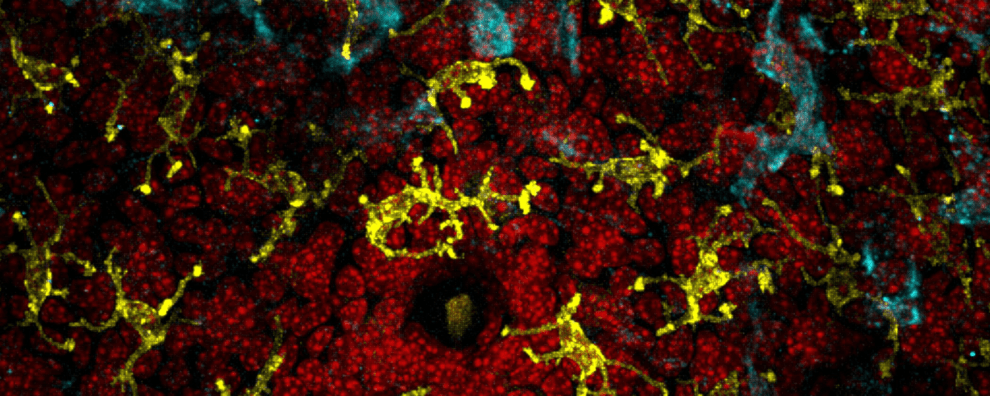 Antibody production
Antibody production
Antibody synthesis: How it works and how to leverage it to develop new drugs
The development of any successful antibody therapy starts by first understanding the process of antibody synthesis and its role in the adaptive immune response. Check out other frequently asked questions (FAQs) page about monoclonal antibodies on our dedicated page.
The role of antibodies
Antibodies represent the first component of the adaptive immune system ever to be described.
Before their discovery, researchers knew that patients who had survived a bacterial infection were immune to subsequent infections with the same pathogen. But the mediation of this immune response by specific molecules was only confirmed when researchers found that bacteria would clump together in the presence of the immune patient’s serum, a process later called agglutination.

Agglutination was found to be caused by the presence of small proteins, later named antibodies, which could bind to foreign molecules (antigens) including proteins, peptides, polysaccharides, and nucleic acids.
Edelman and Robert found that these agglutination-causing molecules were glycoproteins consisting of four polypeptide chains – two identical light (L) chains and two identical heavy (H) chains – linked by disulfide bonds and forming a variable and constant domain.
The variable domain was found to be located on the N-terminal of the polypeptide chains and it mediated the binding to the antigen by the lock and key model (Fab region), while the constant domain was located on the C-terminal and mediated the interaction between the antibody and different cell receptors (Fc region).
Antibody synthesis by B cells
Since their discovery, the development of B and T cells and antibody synthesis have been extensively studied in several vertebrate species. Today, we know that their complex development starts with B cell maturation in the primary lymphoid tissue (mammals – fetal liver and adult marrow, birds – bursa of Fabricius) followed by differentiation and activation in the secondary lymphoid tissue (lymph nodes and spleen), with or without the help of T cells.
In their differentiated stage, antibodies produced by B cells are not secreted, but instead, they are expressed and bound to the plasma membrane where they will serve as antigen receptors. A mature B cell is coated with thousands of these receptors on its surface.
At this point, fully mature B cells circulate in the vast network of lymphatic vessels between the lymph nodes and the spleen until they encounter an antigen. The antigen-dependent activation of B cells results in the development of memory B cells, which express membrane-bound antibodies and have long half-lives; or plasma cells, also known as effector B cells, which secrete large amounts of the specific antibody and have relatively short half-lives.
The activation process is irreversible and it creates plasma or memory cells which will only produce a specific antibody during their entire lifetime. To guarantee a successful immune response, the organism often develops antibodies that are specific to different epitopes (i.e. different parts of the antigen) of the same antigen; thus, increasing the chances of successful immune response and elimination of the virulent, pathogenic or toxic component.
The activation of B cells is a complex process occurring in two stages. In the first stage, the antigen binds to the B cells receptors on the surface of the mature lymphocytes, leading to the internalization and digestion of these molecules and subsequent complexation with the major histocompatibility complex (MHC II) located on the surface of B cells.
The second activation stage can either be a T cell-dependent or independent process. Some microbial components (e.g. bacterial polysaccharides) can activate B cells directly without the help of T cells, however, for the vast majority of antigens, T cell-mediated activation is the most common route of activation. In this case, the antigen complexed with the MHC II is recognized by effector T cells initially primed by other antigen-presenting cells (APC) to recognize the same antigen. This cross-linked recognition triggers the activation of the T cell which, in turn, secrets cytokines that induce the quick differentiation and proliferation of the B cell. This process results in thousands of clonal copies of the activated B cell that secrete antibodies with the same recognition pattern.
The activation process is irreversible and it creates plasma or memory cells which will only produce a specific antibody during their entire lifetime. To guarantee a successful immune response, the organism often develops antibodies that are specific to different epitopes (i.e. different parts of the antigen) of the same antigen; thus, increasing the chances of successful immune response and elimination of the virulent, pathogenic or toxic component.
Application of antibody synthesis for drug development
For decades, the knowledge of antibody synthesis gave researchers the ability to engineer this process to create specific antibodies for therapy. Many of the early techniques relied on animal immunization (typically mice) with a specific antigen and subsequent extraction of effector B cells from its spleen. Nevertheless, these processes resulted in animal antibodies with low homology to its human counterparts, that would trigger the immune response in human patients and, therefore, preclude its application in clinical settings.
To bypass these limitations two different approaches have been developed and are currently in use. The first approach relies on the modification of antibodies obtained from immunized animals in an attempt to increase its homology to human antibodies and decrease its immunogenicity. This process is known as antibody humanization and it is recurrently used to develop new drugs for therapy and diagnostics from animal antibodies.
However, the high costs associated with these processes have led to the development of in vitro antibody development and production processes able to create fully human antibodies from vast human genomic libraries without the need for animal immunization followed by expensive humanization processes. For this reason, these techniques are now the preferred way to develop new antibodies for a multitude of applications. Currently, the most common technique used to generate human antibodies in vitro is through the phage display technology. This approach relies on the use of phages coupled with their prokaryotic hosts and allows the screening of a vast amount of recombination. It is also the only technique that can generate antibodies that bind to very small or non-immunogenic molecules.
Both animal immunization followed by antibody humanization and phage display technologies present different technical challenges, however, both continue to contribute to the development and discovery of new antibodies for therapeutic applications.
- Alberts, B., Johnson, A., Lewis J., Raff, M., Roberts, K., Walter, P. Molecular Biology of the Cell. 4th edition. New York: Garland Science. 2002. B Cells and Antibodies. Available from: https://www.ncbi.nlm.nih.gov/books/NBK26884/
- Janeway, C. A. Jr., Travers, P., Walport, M., Shlomchik, M. J. Immunobiology: The Immune System in Health and Disease. 5th edition. New York: Garland Science. 2001. B-cell activation by armed helper T cells. Available from: https://www.ncbi.nlm.nih.gov/books/NBK27142/
- Gaudino, S. J., Kumar, P. Cross-Talk Between Antigen Presenting Cells and T Cells Impacts Intestinal Homeostasis, Bacterial Infections, and Tumorigenesis. Front. Immunol. 2019; 10:360. doi:10.3389/fimmu.2019.00360.

